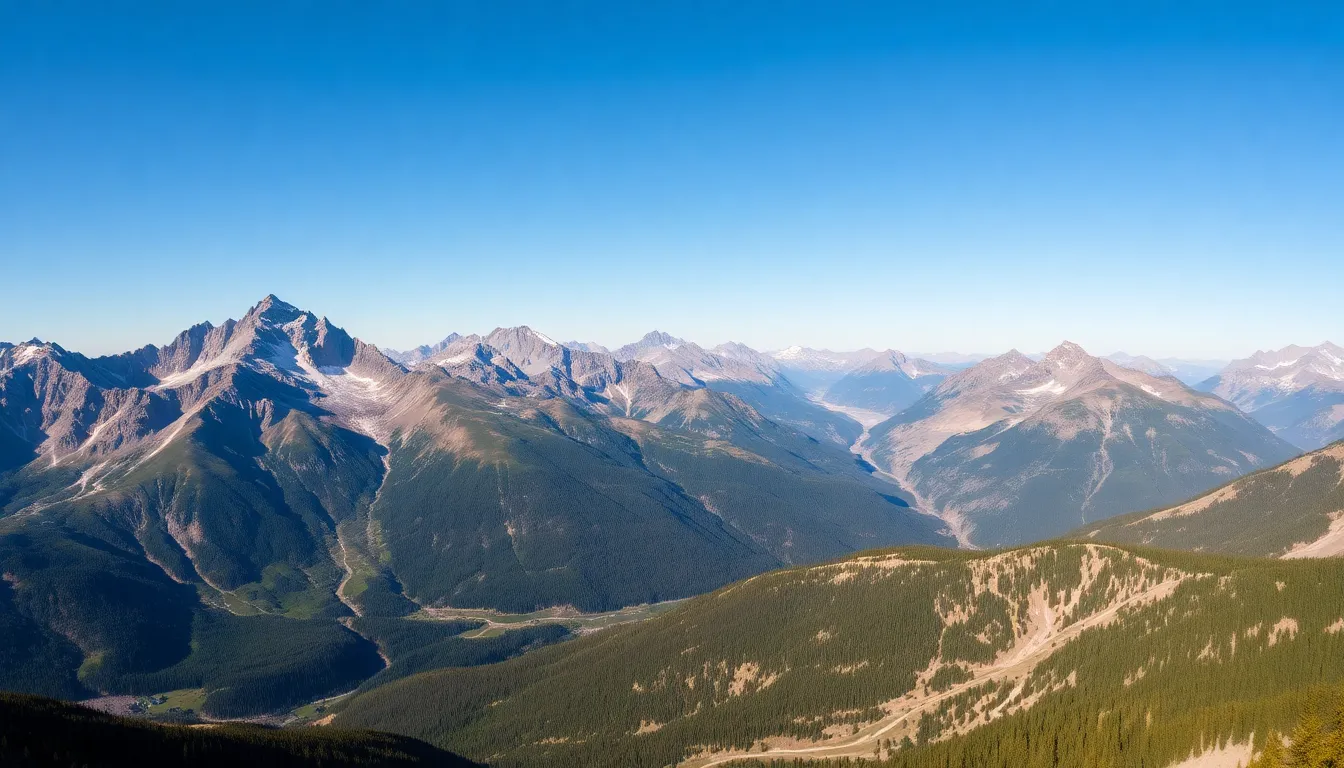Table of Contents
ToggleThe Rocky Mountains stand as a majestic testament to the Earth’s geological history. Stretching over 3,000 miles from Canada to New Mexico, these mountains tell a story that spans millions of years. But just how old are they? Understanding their age not only reveals the dynamic processes that shaped them but also highlights the incredible forces of nature at play.
Formed during the Laramide Orogeny, the Rockies began rising around 80 million years ago. This monumental event reshaped the landscape and created the rugged peaks we admire today. As they continue to evolve through erosion and tectonic activity, the Rockies remain a vital part of the planet’s geological narrative, captivating adventurers and scientists alike.
Overview of the Rocky Mountains
The Rocky Mountains represent a significant geological feature in North America, spanning over 3,000 miles and encompassing diverse ecosystems. These mountains originate in the northern province of British Columbia, Canada, and extend southward through the United States to New Mexico.
Formation occurred approximately 80 million years ago during the Laramide Orogeny, leading to the creation of the distinct rugged peaks and dramatic landscapes seen today. The process involved complex tectonic activities, where shifts in the Earth’s crust contributed to the development of various mountain ranges within the Rockies.
Erosion continues to shape the Rockies, as wind, water, and ice wear down rock formations. This ongoing evolution showcases the mountains’ dynamic geological history, with scientists studying these changes to understand broader Earth processes. Notably, the Rockies serve as a critical habitat for numerous species and a popular destination for outdoor enthusiasts, highlighting their ecological and recreational value.
Geological History

The geological history of the Rocky Mountains reveals a complex timeline marked by significant events shaping their current form. Understanding this history involves examining key processes and milestones over millions of years.
Formation Process
The Rocky Mountains formed during the Laramide Orogeny, which occurred between 70 and 40 million years ago. This orogeny resulted from the subduction of the Farallon Plate beneath the North American Plate. Tectonic forces pushed material upward, creating the mountain range’s prominent peaks and ridges. Various geological materials, such as granite and sedimentary rock, contributed to the mountains’ diverse compositions. Additionally, volcanic activity, although less prominent, played a role in crafting some of the area’s formations.
Major Geological Events
Several notable geological events occurred throughout the Rockies’ history:
- Laramide Orogeny: Between 70 and 40 million years ago, this event caused significant uplift and deformation of the earth’s crust, resulting in the formation of the Rockies.
- Glacial Epochs: Ice ages, particularly the Pleistocene Epoch (approximately 2.6 million to 11,700 years ago), greatly shaped the geography of the region through glacial erosion, creating valleys and fjords.
- Erosion Processes: Continuous erosion from wind, water, and ice actively reshapes the landscape, further defining the terrain’s features over millions of years.
- Sedimentation Events: River systems and lakes contributed to the deposition of sedimentary layers, which built up significant geological formations over time.
These events collectively illustrate the dynamic nature of the Rocky Mountains, framing their rich geological history and ongoing transformation.
Age of the Rocky Mountains
The Rocky Mountains possess a rich geological history dating back approximately 80 million years. Their age reflects a series of significant geological events that have shaped their current form.
Evidence of Age
Geologists utilize several methods to determine the age of the Rocky Mountains. Radiometric dating of igneous and metamorphic rocks reveals dates ranging from 60 to 80 million years ago, coinciding with the Laramide Orogeny. Fossil evidence in sedimentary rock layers provides additional clues, indicating that prehistoric ecosystems existed in these regions long before the mountains rose. Furthermore, geological mapping highlights the characteristics of rock formations, revealing wear patterns associated with glacial activity and erosion, which further supports the timeline of the Rockies’ formation.
Comparison with Other Mountain Ranges
When comparing the Rocky Mountains to other mountain ranges, their age appears relatively young. The Appalachian Mountains, for instance, originated over 480 million years ago, showcasing a more extensive geological timeline. In contrast, the Andes are closer in age to the Rockies, forming around 70 million years ago due to tectonic plate movements. These comparisons illustrate the diverse geological histories influencing mountain formations worldwide and underline the unique evolution of the Rocky Mountains within Earth’s history.
Factors Influencing Age Estimation
Multiple factors play a role in estimating the age of the Rocky Mountains, including geological processes, dating techniques, and fossil records.
- Geological Processes: The complex tectonic activities during the Laramide Orogeny directly influence age estimation. These events involved the uplift and deformation of various rock layers, making it necessary to analyze the stratigraphy to understand when they formed.
- Radiometric Dating: This scientific method determines the age of rocks through the decay of radioactive isotopes. By measuring isotopes like uranium and potassium in the surrounding rock, geologists can establish a timeline for when specific formations occurred.
- Fossil Evidence: Fossils embedded within rock layers provide critical information regarding the age of the mountains. By studying the types and ages of fossils found, scientists gain insights into the environmental conditions that prevailed during different geological periods.
- Sediment Analysis: The accumulation of sediments over time reveals additional data on age. The geological history recorded in sediment layers helps in tracking the timeline of rock formation and erosion processes throughout history.
- Glacial Events: The impact of glacial epochs, particularly during the Pleistocene, also contributes to age estimation. Glacial movements reshaped the landscape and offer clues about the timing of highland formation and the evolution of the Rockies.
Each of these factors interconnects to provide a clearer understanding of how old the Rocky Mountains are, reflecting their intricate geological history.
The Rocky Mountains stand as a testament to Earth’s dynamic geological processes. Their formation around 80 million years ago during the Laramide Orogeny marks a significant chapter in the planet’s history. Ongoing erosion and sedimentation continue to shape these majestic peaks, revealing the mountains’ ever-evolving nature.
As researchers delve into the complexities of their age and formation, they uncover valuable insights about ancient ecosystems and the forces that have molded the landscape. The Rockies not only provide a glimpse into Earth’s past but also serve as vital habitats and recreational havens today, highlighting their importance in both ecological and human contexts.




